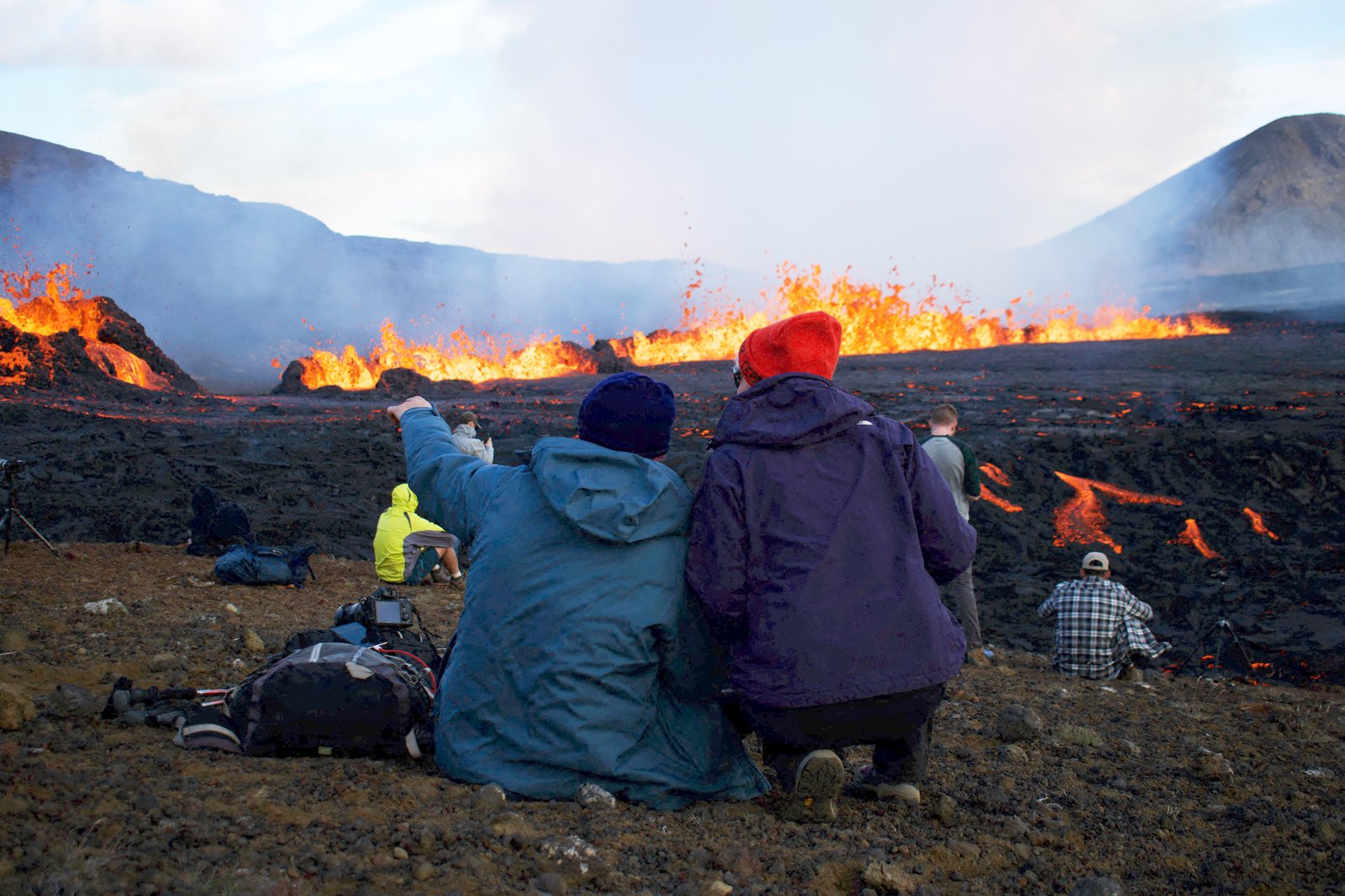The volcanic eruption in southwestern Iceland has resumed, marking the fifth time lava flows have emerged since the region awoke from an 800-year dormancy in 2020. The magma surfaced on Sunday morning on the Reykjanes peninsula, approximately 40 kilometers (25 miles) from the country’s capital, in close proximity to where a three-day eruption occurred in December.
Despite the renewed volcanic activity, flights to and from Iceland are expected to continue without disruption, a pattern consistent with previous eruptions in the area. The latest eruption poses a potential threat to the fishing town of Grindavik, situated nearby. Lava is currently erupting on both sides of a protective barrier being constructed to shield Grindavik from the flowing lava, as confirmed by the Meteorological Office, which cited Coast Guard surveillance flight images.
Grindavik faced evacuation in November, with many residents gradually returning. However, a significant portion of the town’s 3,700 inhabitants remains away. The construction of a protective rampart was underway to safeguard Grindavik, mirroring the completion of a similar barrier that shielded Iceland’s renowned tourist attraction, the Blue Lagoon spa. Additionally, the barrier protected the Svartsengi power plant owned by HS Orka hf, which supplies heat to approximately 30,000 residents on the peninsula.
The volcanic events unfolding in Iceland are closely monitored for their potential impact on the local population and infrastructure. As the eruptions continue, efforts to manage the situation and mitigate risks to populated areas remain a priority. While the natural spectacle attracts attention from around the world, the safety and well-being of the communities affected by the volcanic activity take precedence.
The repeated eruptions in southwestern Iceland highlight the dynamic nature of the region’s geological activity. Understanding and managing such occurrences are crucial for the safety of local residents and the continuity of essential services. Ongoing surveillance, precautionary measures, and swift response plans contribute to minimizing the potential impact of volcanic events on communities and infrastructure.
As the situation evolves, authorities will continue to assess and adapt their strategies to ensure the safety of those living in the vicinity of the volcanic activity. The resilience of the affected communities, combined with effective emergency response mechanisms, plays a vital role in navigating the challenges posed by natural events like volcanic eruptions in geologically active regions.
Travel to Europe
Coach rental in Europe
Travel agency Paris
DMC for Europe
DMC for Paris
